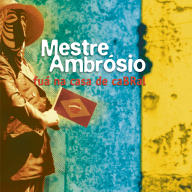Mestre Ambrósio
Biography
Formed in Recife (Pernambuco) in 1992, the Mestre Ambrósio developed a particular sound that draws on the northeast Brazilian genres of maracatu, ciranda, coco, baião, and caboclinho, mixed with pop, rock, and world pop music, including Arabic. Associated with the mangue beat, Mestre Ambrósio, unlike the Nação Zumbi or Chico Science, is more devoted to the northeast Brazilian tradition. Its name derives from the role of master of ceremonies of the folkloric theater Cavalo Marinho from Pernambuco. The group's earliest performances, in 1993, had only instrumental songs, with the vocals appearing later. In 1996, produced by Marcos Suzano, Lenine, and Denilson, their first CD was released (Mestre Ambrósio), gaining a good response for José and Se Zé Limeira Sambasse Maracatu. The album sold 20,000 copies and yielded invitations for their first international tour, taking place in Germany, Portugal, Spain, Belgium, and Luxembourg. Settling in São Paulo, Mestre Ambrósio was invited the next year to perform at the Summer Stage in the Central Park in New York, NY. The video for Se Zé Limeira Sambasse Maracatu brought them a nomination for the MTV Video Music Brasil in the Revelation Band category. Their song José was included on the German compilation Strictly Worldwide (Piranha Records). Another of their songs, Baile Catingoso, was included in the soundtrack of the film #Baile Perfumado (directed by Lirio Ferreira and Paulo Caldas). Mestre Ambrósio's second album, Fuá na Casa de Cabral, was released by Sony and had electronica touches provided by Suba. In 2000, the group took part in a North-American tour, having being praised by U.S. critics. ~ Alvaro Neder, Rovi
Top Tracks
Albums
Videos
Close












